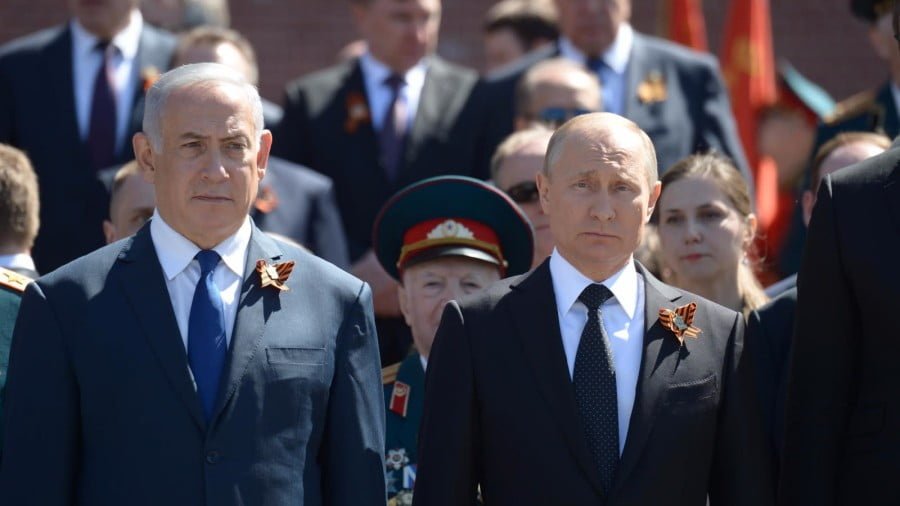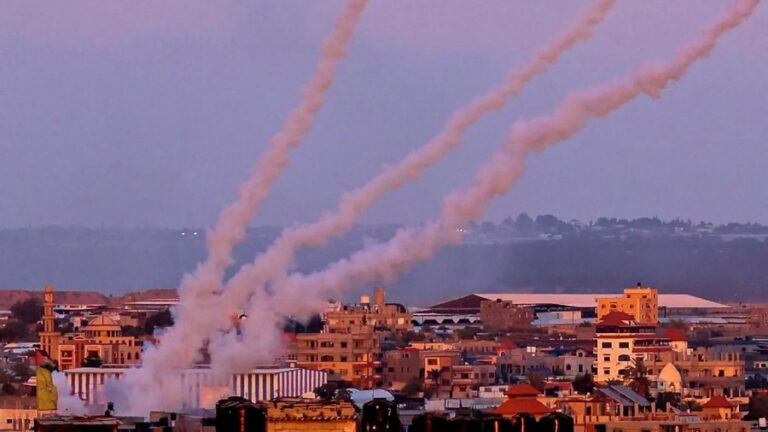Daesh and the US Share a Goal of Disrupting the Kabul-Taliban Ceasefire and the Wider Afghan Reconciliation Process
A ceasefire declared between the Afghan government and Taliban on the eve of the Islamic celebration of Eid has been devastated by an attack on a meeting between Afghan Security Forces and Taliban representatives in Nangarhar province. Already over 20 have died in the terrorist attack. This represents a further attempt by a terrorist force- almost certainly Daesh, to stall the broader reconciliation process between Kabul and the Taliban.
Images of jubilant scenes filmed prior to the attack have already emerged on social media:
VIDEO: Afghan Taliban chilling out with locals and Afghan security forces, waving both Taliban flag and Afghan national flag, filmed in Nangarhar. #Afghanistan pic.twitter.com/XMpvfKJLIe
— FJ (@Natsecjeff) June 15, 2018
In January of this year, the President of the Supreme National Defence University of Iran General Ahmad Vahidi has warned that the US will attempt to secure safe passage for Daesh terrorists to Afghanistan, the Caucasus and Central Asia, now that the Takfiri terrorist group has been largely defeated in Syria and Iraq. While the Russian Caucasus, including Chechnya have a very effective modern security apparatus which is geared towards the prevention of terrorism, parts of Central Asia are potential soft-spots, specifically in areas where the US has military bases.
Overall, the place of most concern in respect of a new wave of Daesh terrorism is Afghanistan. In one of the great ironies of recent history, the US continues to fight for a fledgling central government in Kabul that remains genuinely unpopular with many Afghans. As China, Pakistan and Russia have stated, the only hope for peace is to orchestrate an internal dialogue based peace process where moderate elements of the Taliban rebels sit with the government and reach some sort of conflict resolution. By contrast, in 2011, Syria was a county with a strong, popular, functional and non-sectarian government which the US systematically weakened by importing mostly foreign Takfiri terrorists, including Daesh, while calling some of the Takfiri groups “moderate rebels” although none of them were moderate nor were they engaged in an authentic local rebellion.
Thus one sees the US in a precarious situation in which it continues to back Takfiri groups in Syria in spite of the clear victory of Damascus and its allies in the Arab Republic, while working to both publicly and covertly undermine reconciliation efforts between the “moderate rebel” factions of the Taliban and the Afghan government. As the Taliban continue to de-facto represent a large portion of Afghanistan ethnic Pashtun majority, it has become clear that in rejecting overt olive branches from the Taliban, Kabul would be dooming itself to a perpetual political crisis.
Having apprehended a gradual turning of opinion in Kabul from one of hostility towards the Taliban to an atmosphere in which the government is increasingly willing to work with regional partners in facilitating an all-parties inter-Afghan peace process, the appearance of evermore Daesh terrorists in Afghanistan is worrying, not least because Daesh have a policy of working unilaterally against all other factions in the country. Furthermore, unlike the Taliban, many Daesh fighters come from far outside of the region.
With many openly questioning links between the increased presence of Daesh troops in Afghanistan and the US attempts at covertly foiling an internal peace process, it is now appropriate to question whether the US is not repeating its Afghan strategy of the 1980s and is attempting to internationalise the terrorist aspect of the current Afghan conflict by covertly facilitating the movement of foreign fighters into Afghanistan.
Unlike during the Obama years where Afghanistan was partly neglected in favour of sowing discord in Libya, Syria, Egypt and the wider Middle East, today, US Defence Secretary Mattis has opted for a more traditional containment strategy aimed at China which seeks to use Afghanistan as a means of sowing instability in Pakistan – China’s link from the Pacific to the Indian Ocean via the China-Pakistan Economic Corridor, while also using Afghanistan as a place from which to potentially provoke conflict in Russia’s soft Central Asian underbelly, particularly in Tajikistan. Afghanistan is an ideal location to both contain and provoke China and Russia, all from the same location. The fact that the ongoing US war in Afghanistan is keeping countries like Russia, China, Iran and Pakistan away from Afghanistan’s natural resources is just an economic bonus for a war intentionally designed to have no tangible end point.
In Afghanistan, apart form seizing the country’s natural resource deposits while covertly profiting from the trade in poppies which are used in the production of dangerous narcotics, the US has more obvious geostrategic reasons for remaining in Afghanistan. Because of this, it is in the US interests to protract the self-evident military quagmire in the country in order to justify a presence that can be used to accomplish the following:
1. Posing a threat to Pakistan’s security on its weak north-western frontiers in order to attempt and gain leverage over a Pakistani establishment that is becoming increasingly sceptical of its rapidly deteriorating partnership with Washington.
2. Disrupting the social stability of Pakistan’s Balochistan province through the covert sponsorship of terrorism (in partnership with India’s RAW) which itself poses a danger to the port of Gwadar – the southernmost terminus of the China-Pakistan Economic Corridor (CPEC).
3. Gaining access to Iran’s eastern borders as part of the broader US strategy to antagonise Iran through a cross-border terror campaign targeting both Pakistan’s Balochistan province and Iran’s Sistan and Baluchestan province through the use of a variety of terrorist groups including al-Qaeda.
4. Attempting to sow discord between Pakistan and Iran at a time when both countries are in the early stages of a win-win reconciliation.
5. Disrupting possible One Belt–One Road trading routes through a would-be peaceful Afghanistan.
6. Attempting to dissuade India from continued cooperation with Iran by offering New Delhi a cut of the wealth the US continues to plunder from Afghanistan in exchange for a partial withdrawal of Indian investment in the Iranian port at Chabahar or better yet (from the US perspective) an Indian partnership in Afghanistan which would further put Pakistan’s security situation at risk.
Taken in totally, this new US strategy is designed to continually foment chaos along crucial locations on China’s One Belt–One Road trading network. It is no wonder therefore that China is taking an increasingly assertive approach to promoting its preferred dialogue based peace process for Afghanistan, which is a point of attraction for many factions in Afghanistan as well as for China’s close Pakistani partner. Such a peace process which would see the Pashtun Taliban enter discussions with minority factions who dominate Kabul, would also implicitly be in Iran’s interests as both Pakistan and Iran comprise important spaces along One Belt–One Road.
The key for both Pakistan and Iran is to be aware of this new American strategy and enhance security cooperation accordingly. This will require a new realisation that ultimately. the US threatens both country’s interests through its presence in Afghanistan and that suspicions over the recent past, must be replaced by a pragmatic understanding of contemporary security needs in order to face the American threat that is increasingly mutual to both Iran and Pakistan.
Because of this, the presence of Daesh in Afghanistan as well as other non-regional terror groups, including Iran born Kurdish terrorists who have begun collaborating with Daesh in Afghanistan, clearly fits in with the broader modus operandi of the US in Afghanistan.
The US knows that it cannot “win” anything approximating a traditional war in Afghanistan. Instead, the US goal is to prolong the quagmire so as to continue to justify its presence in the region, all while using the Afghan conflict as a jumping off point to create conflicts in all of Afghanistan’s neighbours with an over all plan to do as much damage to the progress of China’s One Belt–One Road as possible.
In this sense, Daesh in Afghanistan fits in with Washington’s self-evident strategy of military/terrorist obstructionism. Today’s attack on a meeting in Nangarhar can therefore be understood as an attack on the wider Afghan peace process and all it has come to represent.
UPDATE:
In the aftermath of the bomb blast, Afghan President Ashraf Ghani stated that members of the Taliban will now be able to receive the same social benefits and assistance as all other Afghans in a historic first since the 2001 overthrow of the Taliban led Afghan government. This clearly demonstrates that today’s attack has not diminished the overall trajectory of the peace and reconciliation process in spite of a substantial tragedy for all Afghans.
https://twitter.com/BREAKING_PTV/status/1007988567535226881








Reblogged this on The Most Revolutionary Act and commented:
With many openly questioning links between the increased presence of Daesh troops in Afghanistan and the US attempts at covertly foiling an internal peace process, it is now appropriate to question whether the US is not repeating its Afghan strategy of the 1980s and is attempting to internationalise the terrorist aspect of the current Afghan conflict by covertly facilitating the movement of foreign fighters into Afghanistan.